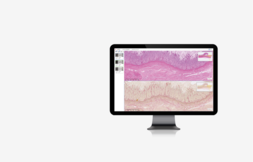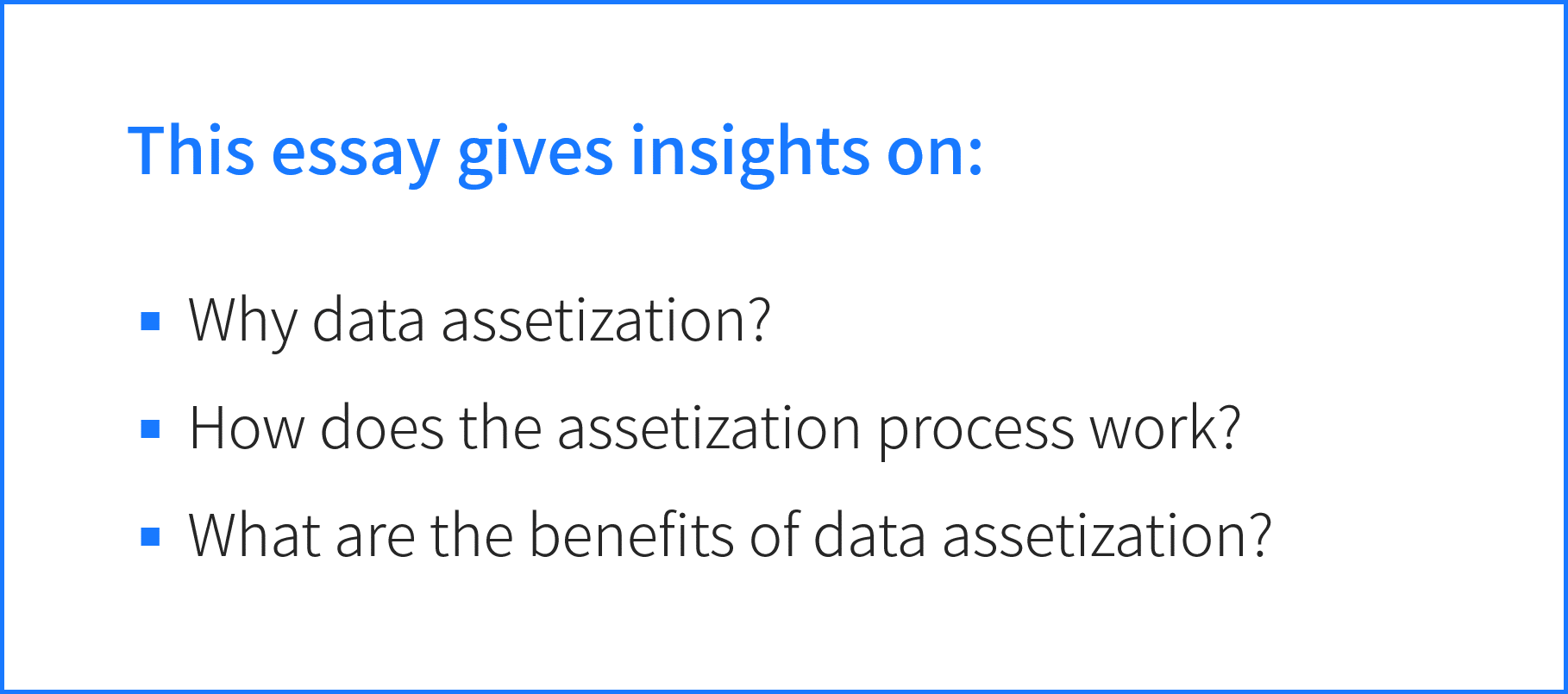
Data is the new gold
Data is the new gold in this digital age we live in. Enterprises and countries around the world build strategies and make important decisions based on insights gained from data. The healthcare sector is no exception either. While compliance to patient privacy is one of the core challenges of big data in healthcare, an increasing number of authorities are adjusting the details of privacy policies to enable wider use of medical data in clinical care and research. For example in Korea, the Privacy Act has recently been revised to allow the open use of pseudonymized data (data which has been processed so that it’s impossible to identify an individual without additional information) for statistics, scientific research, and public record-keeping purposes.
Changing perspective on data and its usages
So how can we fully leverage data as a valuable hospital asset? Let’s first take a look at the checklist below to see how you’re currently perceiving data at your hospital.
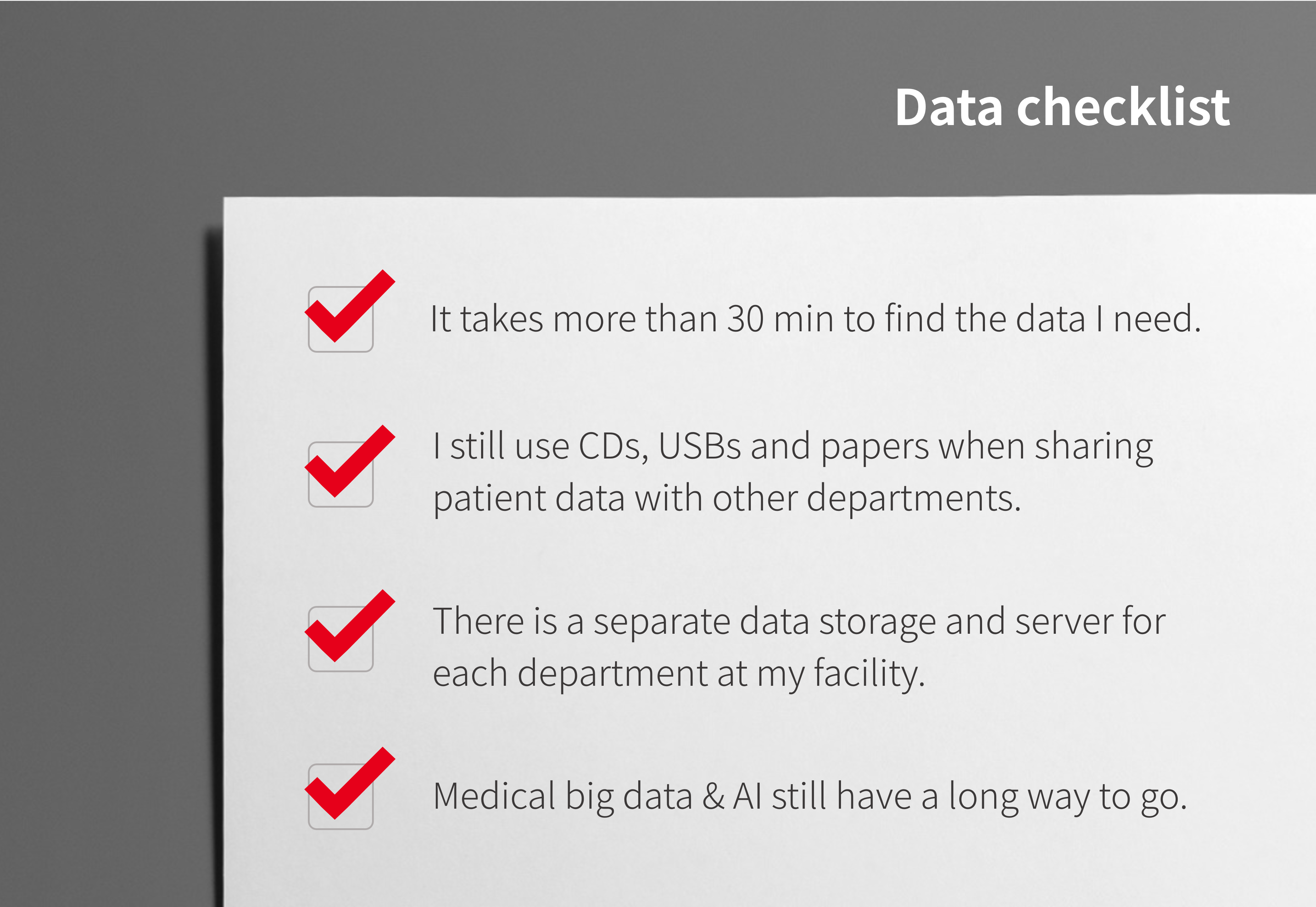
If you checked off more than two items on the list, it could be an indication that you’re perceiving data simply as a source of storage. You may need to switch up your perception of data from a source of storage to a source of value creation before you can start leveraging data as an asset.
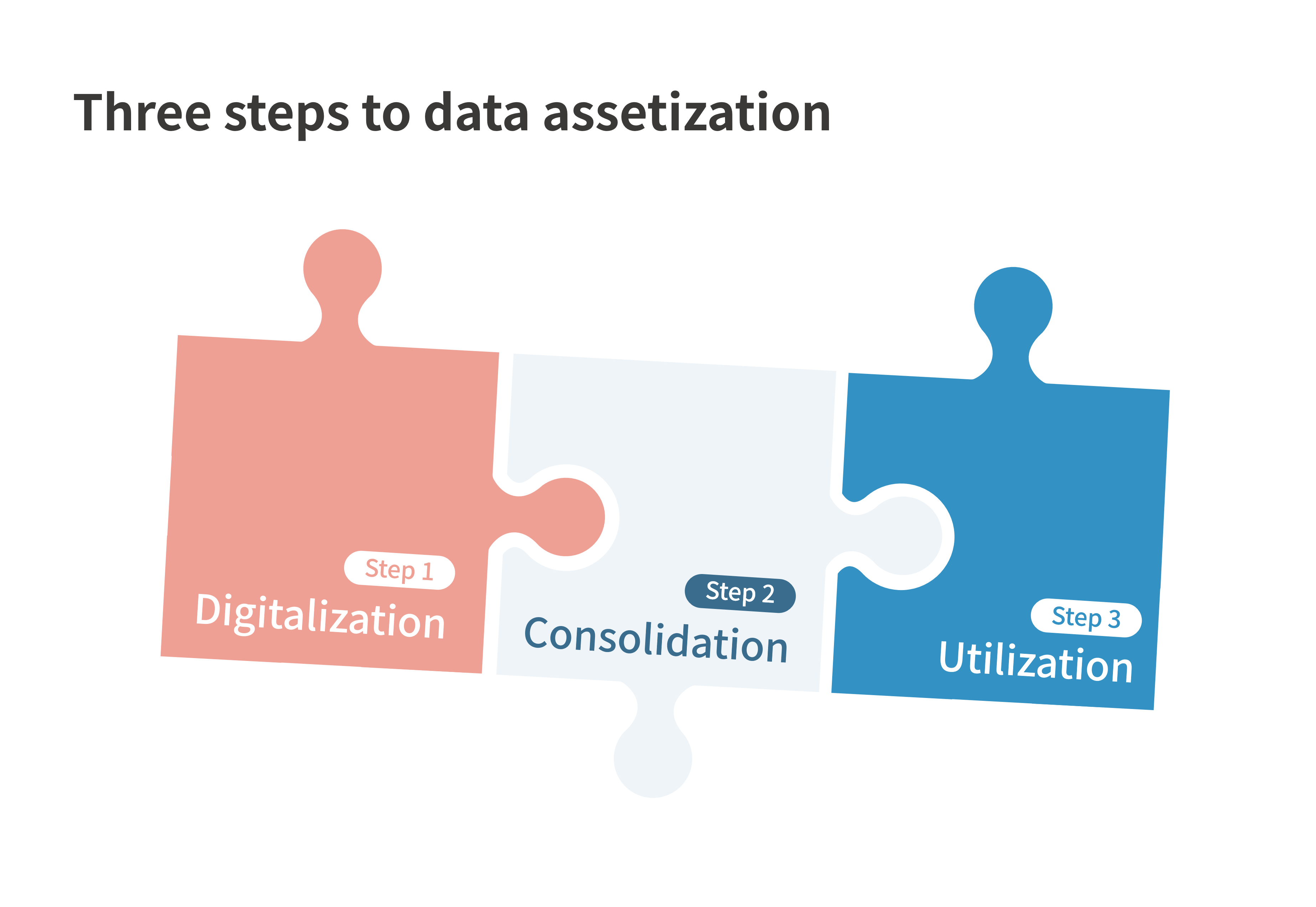
There are largely three steps to the process of data assetization: ① digitalization,
② consolidation, and ③ utilization.
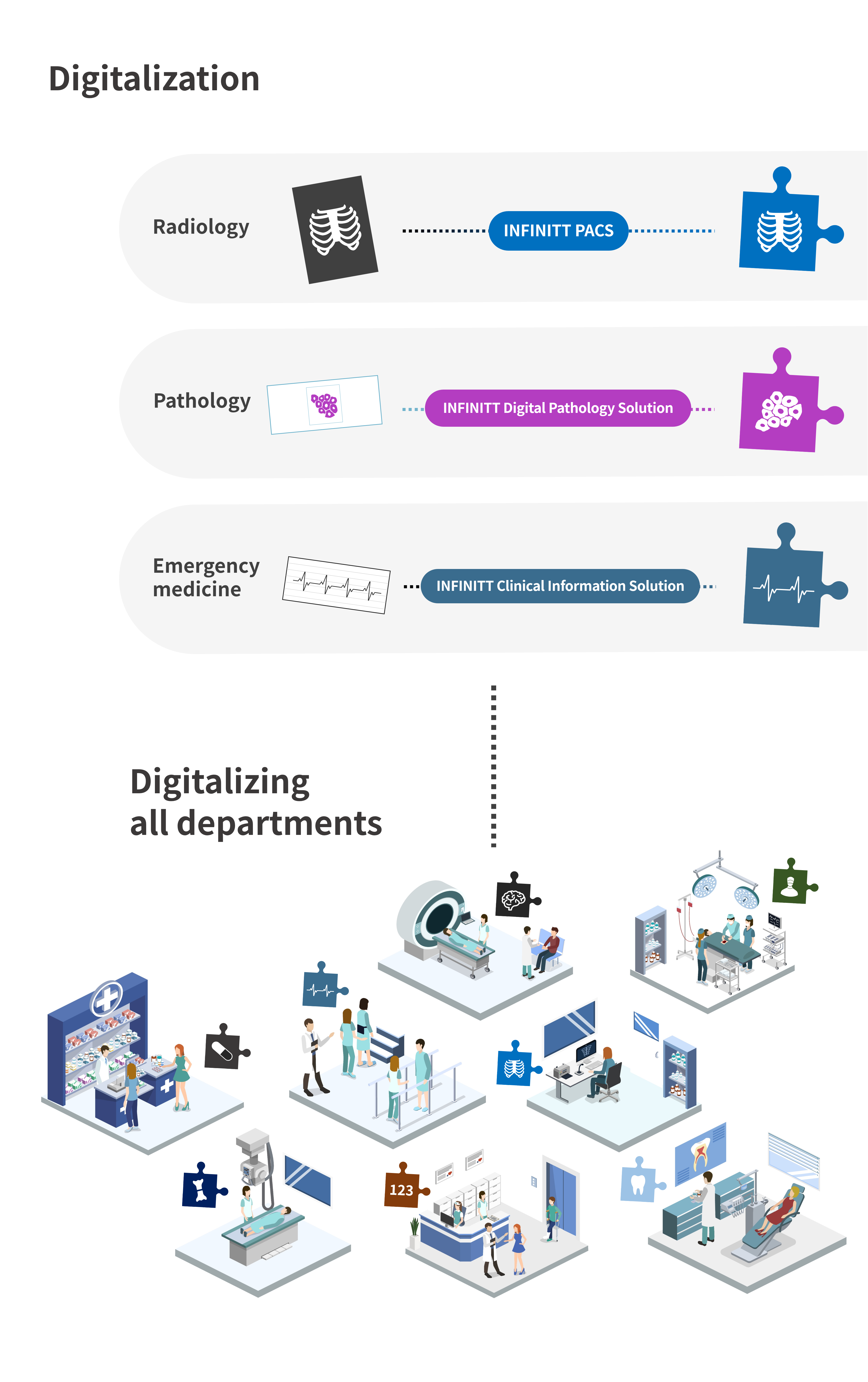
Step #1 Digitalization
The first step is the digitalization of all departmental data. Just like sharing the same language helps us communicate more effectively with each other, data also needs to be in the same ‘digital format’ to connect more seamlessly with data from other departments.
While digitalization sets the foundation for the entire data assetization process, it offers a lot of merits on its own as well. For example in the case of a radiology department, the diagnostic workflow is dramatically improved through the adoption of PACS which works to digitalize the storage and management of all patient images. This enables radiologists to start reading the scans right after they’re taken or refer to past or relevant images while reading the current exams. Data management also becomes much easier since there is no need to physically store films anymore.
INFINITT helps hospitals digitalize their data as well as diagnostic workflows for a wide range of medical specialties including radiology, cardiology, pathology, radiation oncology, emergency medicine, ophthalmology and more.
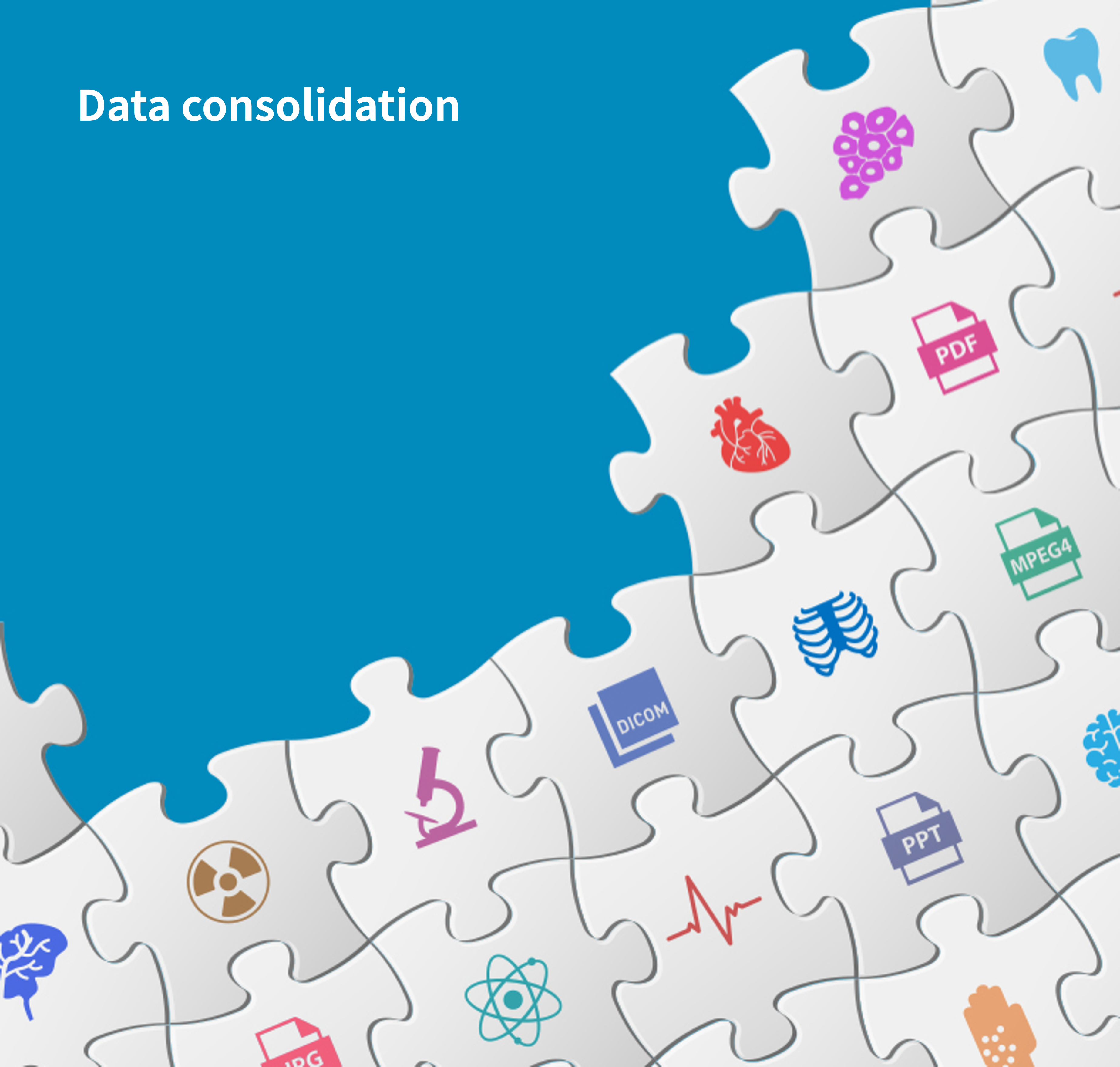
Step #2 Data consolidation
Then comes data consolidation. Bringing data together through consolidation leads to patient-centric use of data. Physicians often refer to data from other departments when diagnosing diseases or treating patients. The consolidation of all departmental data enables them to easily access whatever data they need in real time and deliver care from a more holistic perspective.
In addition, data consolidation is the key to medical big data. No matter how much data you have, you can’t really call it big data when it’s scattered across different departments. It’s important to remember that the value of big data comes from its interconnectedness.
INFINITT’s vendor neutral archive, INFINITT Healthcare Platform (IHP), supports standards-based consolidation of both structured and unstructured data from all departments. With IHP, you can easily access and refer to any patient data from anywhere, anytime and conduct various researches based on the medical big data at hand.
Step #3 Data utilization
Once the data has been digitalized and consolidated, it’s now time to take full advantage of its potentials. Let’s take a look at how you can make use of these data assets in real clinical settings.
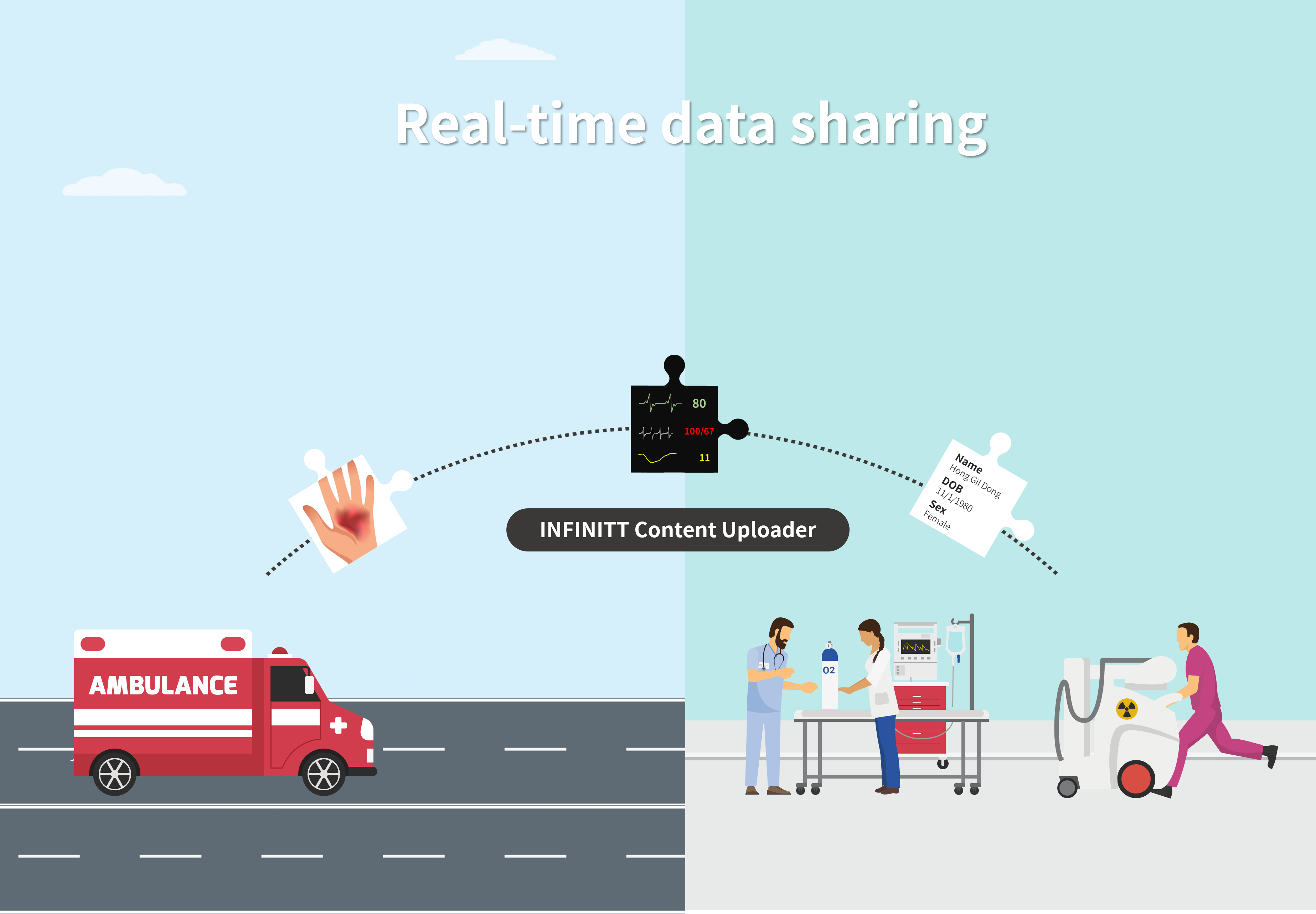
① Real-time data sharing
In an emergency situation, timely treatment could mean life or death for the patients. For example when transferring a trauma patient in an ambulance, the emergency medical technicians (EMTs) can capture and upload the status of trauma conditions and other vital signs data (ECG, blood pressure, oxygen saturation levels, etc.) to your hospital using a web-based application called INFINITT Content Uploader. This is all done in real time, on their mobile devices. The medical team back at the hospital can then quickly check the severity of trauma conditions using an enterprise viewer called ULite and make preparations for timely treatment prior to patient arrival.
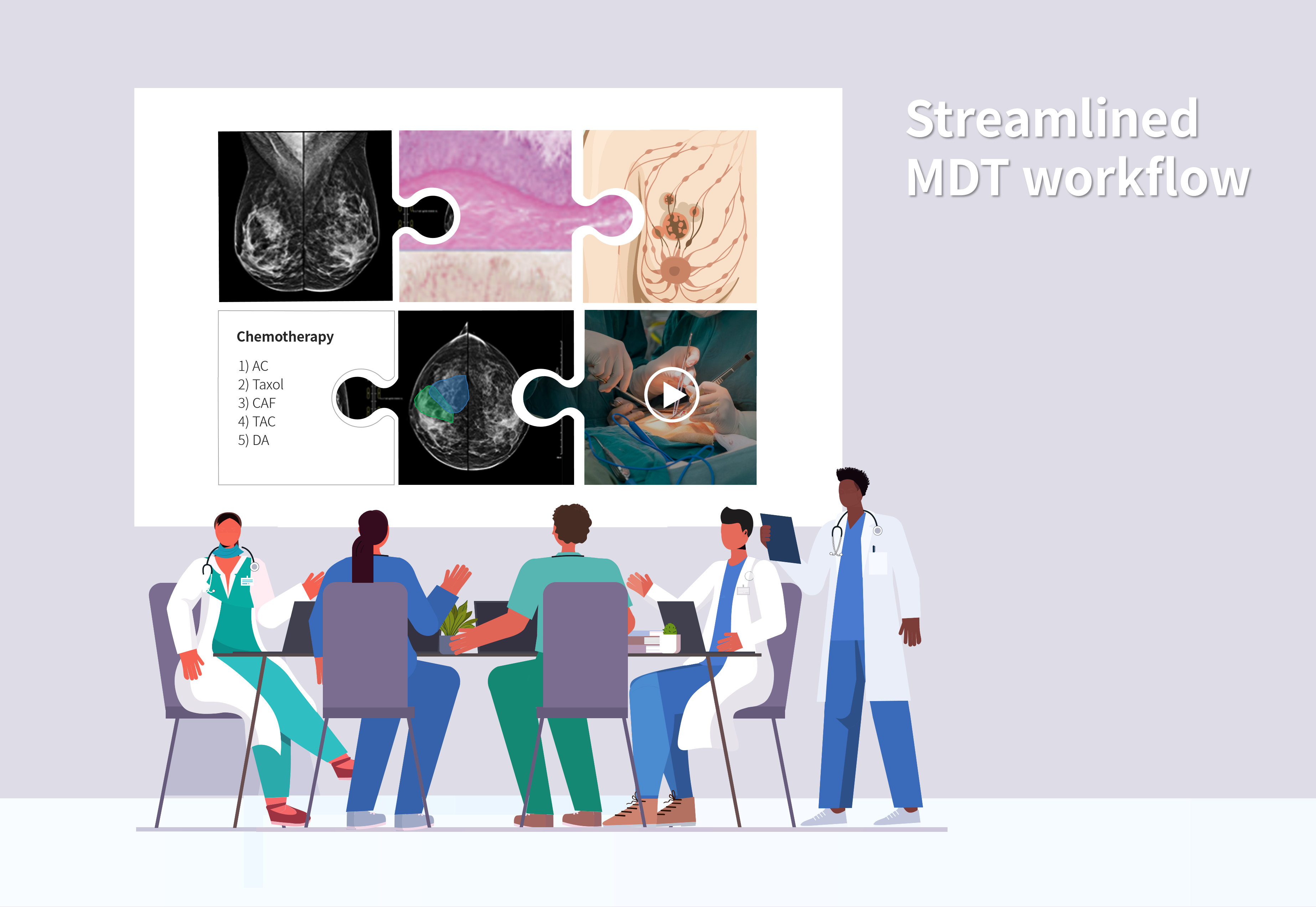
② Streamlined MDT workflow
Multidisciplinary team (MDT) care is one of the most patient-centric ways of diagnosing and treating patients with complex diseases like cancer. MDT-participating physicians from each specialty can now prepare materials for future MDT meetings with just a click of a button while reviewing patient exams on each of INFINITT’s departmental solutions like INFINITT PACS and INFINITT Digital Pathology Solution. Then on the day of the MDT meeting, they can discuss patient conditions from a more holistic perspective while viewing a pre-uploaded set of patient data on INFINITT MDT viewer. Because the entire MDT workflow is streamlined through data digitalization and consolidation, it becomes easier for the physicians to delve straight into in-depth discussions on what’s best for each patient.
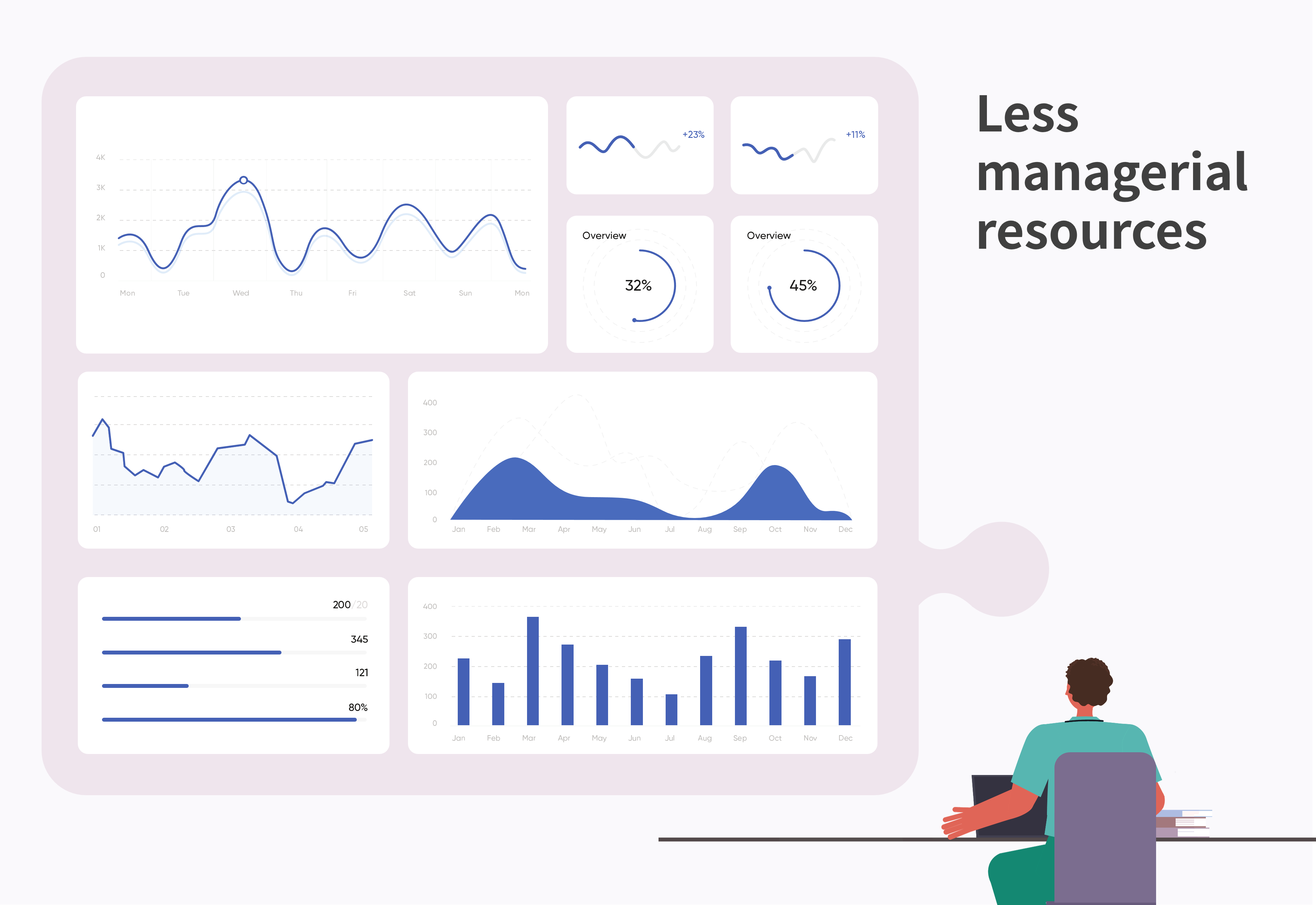
③ Less managerial resources
Assetized data is easier to manage in many ways. Before, each department used to manage its own server and storage which resulted in a lot of costs and resources for the hospital as a whole. But now with INFINITT Fault Prevention Solution (INFINITT FPS), hospital IT managers are able to centrally manage and monitor all of INFINITT’s departmental solutions, servers, and storages from a single point of access. INFINITT FPS automatically detects any risks of system downtime, sends alerts to the IT managers and restores the system according to preconfigured manual. The IT managers can also check and monitor the real-time status of each departmental solution from the INFINITT FPS dashboard. In the end, the assetization of data strengthens the continuity of system operations and data management throughout the hospital and helps build a more stable clinical environment.

④ Virtuous cycle of medical data
Data assetization enables hospitals to create a virtuous cycle of medical big data. Clinical data collected from over the course of patient care is consolidated, classified and processed (cleansed, labelled, anonymized, pseudonymized, etc.) into research datasets through IHP. These datasets can then be used to reduce the duration and cost of clinical trials, to develop new AI algorithms for preventive medicine and more. The insights or technologies gained from these research projects are re-applied to clinical practices, and the following patient outcomes are then used as the basis for research again. This is how medical data circulates between patient care and research in a virtuous cycle of value creation, enabling hospitals and physicians to provide quality care to the patients.
Your strategic partner, INFINITT Healthcare
Hospitals with a systematic data strategy will be the ones to lead the future healthcare market. It’s only natural because a systematic data strategy lays the foundation for securing higher quality data and making use of that data for more advanced studies, which ultimately results in being able to provide better quality care.
In order to successfully assetize your departmental data at an enterprise scale, you need a strategic partner with high expertise in data management and system interfaces. With over 20 years of experience in the field of healthcare digitalization and data integration, INFINITT Healthcare can be a strategic partner in your journey to unlocking the true value of data at your hospital.
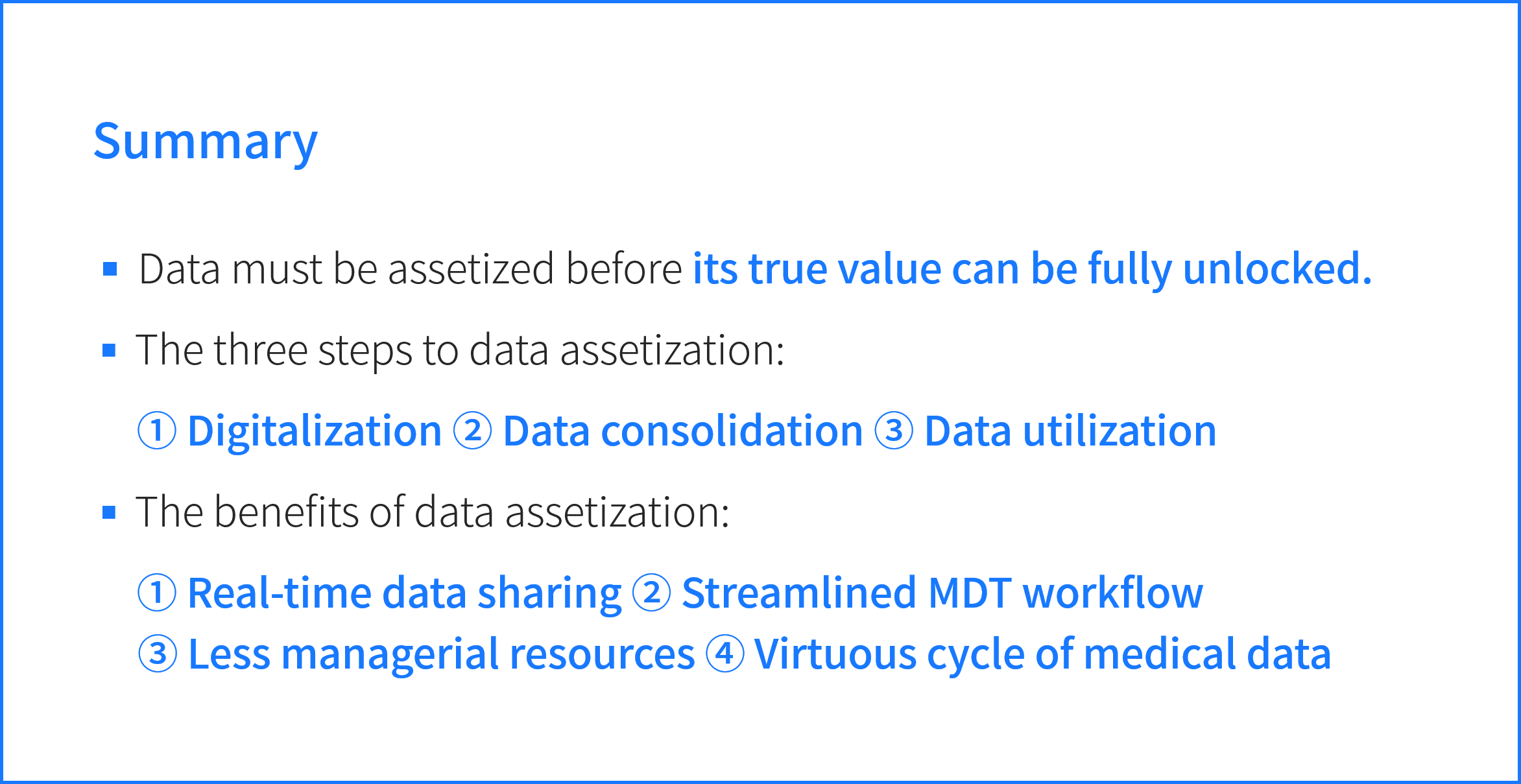
-
Product Essay
영상의학과의 데이터 활용, INFINITT Enterprise Search로 쉽고 빨라집니다
#INFINITT_Enterprise_Search #영상의학과 #데이터활용
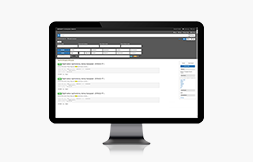
-
Product Essay
INFINITT DoseM으로 시작하는 체계적인 방사선량 관리
#INFINITT_DoseM #방사선량_관리 #dose_management
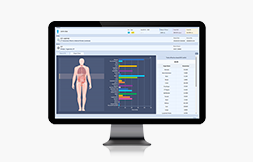
-
Product Essay
의료 데이터를 바라보는 새로운 관점, INFINITT와 시작하는 데이터 자산화
#데이터_자산화 #enterprise_imaging #INFINITT_Healthcare_Platform
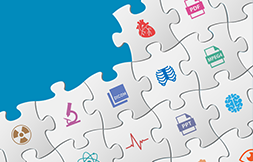
-
Product Essay
INFINITT PACS 7.0이 영상의학의의 새로운 역할을 지원하는 세 가지 방법
#INFINITT_PACS #인공지능 #협업 #판독_효율성_향상
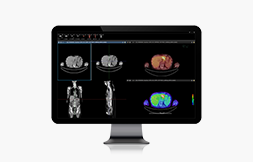
-
Product Essay
INFINITT MDT와 함께하는 효율적인 다학제 진료
#다학제진료 #INFINITT_MDT
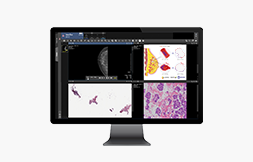
-
Product Essay
Enterprise Imaging, 의료 영상 및 데이터 통합 전략
#enterprise_imaging #의료영상데이터통합 #데이터공유 #다학제진료 #빅데이터 #AI

-
Product Essay
INFINITT Digital Pathology Solution으로 구현하는 디지털 병리 워크플로우
#디지털병리 #INFINITT_Digital_Pathology_Solution
